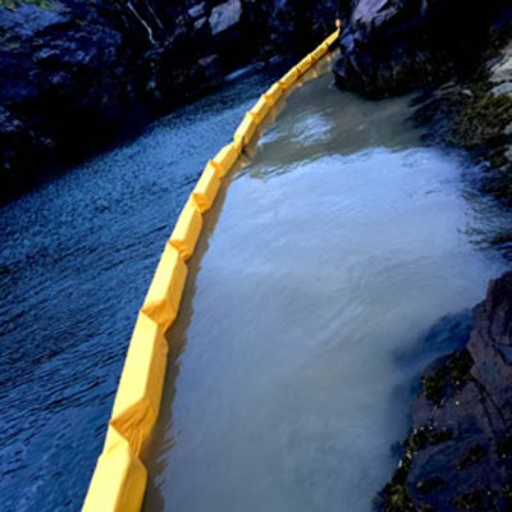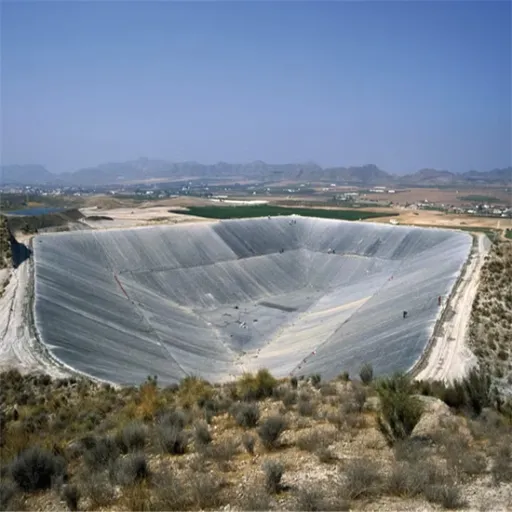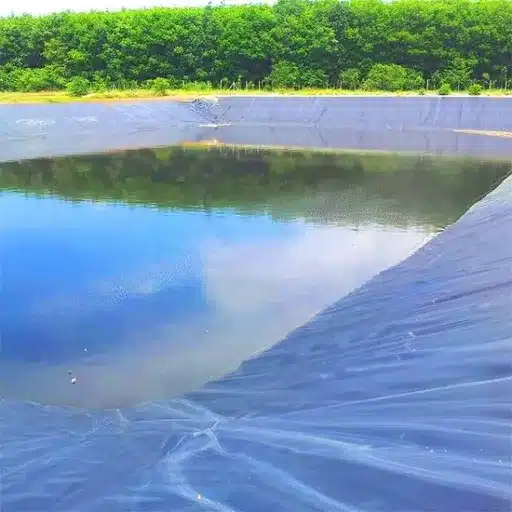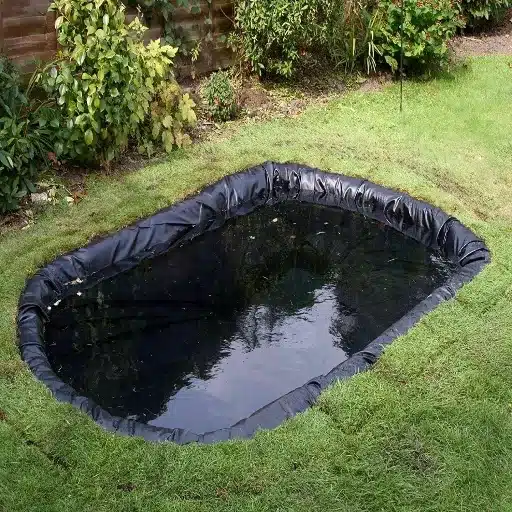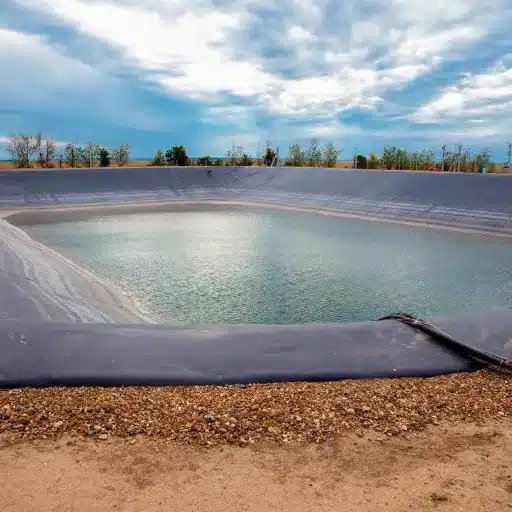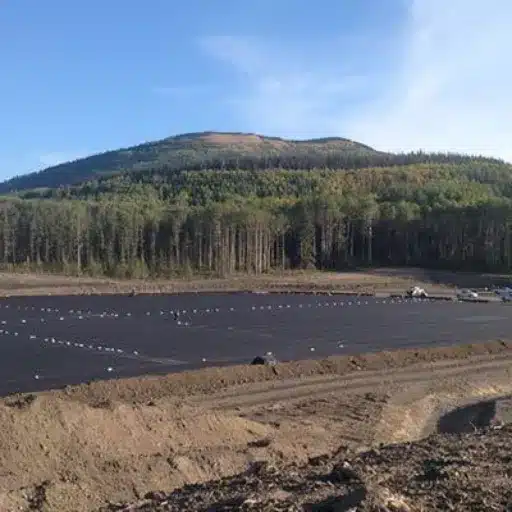Sediment and turbidity control becomes a major issue in the construction and marine projects in the vicinity of water bodies, with the idea of keeping the environment safe. This is where silt curtains come into the picture-float-type silt and turbidity barriers. These solutions are designed to control the movement of suspended particles so that the adverse influences of dredging, construction, and any other water-based activities can be minimized. In this article, we will discuss silt curtains-purpose and their working mechanism along with highlighting the major benefits so as to give you a better understanding of how they act as an effective environmental tool. Whether you are new to the concept or looking for ways to maximize your existing practices, this guide has some insights that can be of help towards ensuring responsible undertakings of your projects.
Introduction to Floating Silt Curtain
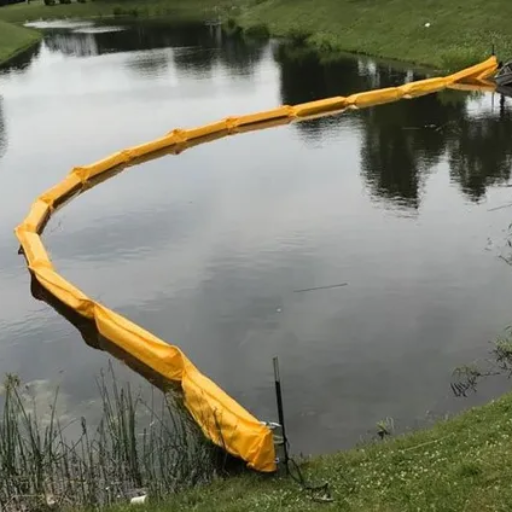
Floating silt curtains are exactly what suspended solids float on-water sediment barriers that during construction or dredging activities may contain and control sedimentation. They are erected with materials that are durable and permeable or impermeable and anchored into the substrate to curb sediment dispersion with a net or barrier effect. By isolating emergency areas, silt curtains ensure water quality and surrounding ecosystems and compliance with environmental regulations.
Definition of Floating Silt Curtains
Floating silt curtains, also the turbidity curtains or sediment barriers, are engineered solutions to effectively manage sediment displacement in-water activities. The curtains are usually constructed from durable materials such as PVC plastic or geotextile fabric, with flotation at the top and ballast weights at the bottom. This assures that the curtain stays vertical in the water column and thereby blocking sediment movement while allowing free passage of water.
According to up-to-date information, floating silt curtains are extensively utilized in dredging, pile driving, and marine construction and shoreline restoration projects. Though a major protective factor in maintaining water quality, they do so by curtailing the spread of contaminants and sediment that could otherwise injure aquatic life or disrupt the ecosystem. Studies have shown that when installed properly, silt curtain could lessen the suspended sediment concentration by more than 90% of the increase in turbidity levels, and preserve habitats for aquatic life.
Newer models of such curtains are built to withstand all sorts of environmental conditions like strong currents, waves, and winds. They come in a number of options, including lightweight curtains for calm water conditions and heavy-duty curtains for high-energy environments. Their versatility and performance are invaluable to carrying on projects that aim for compliance with environmental standards and reduced ecological impact.
Purpose and Functionality
Silt curtains control levels in order to protect both water and life in the basin from the harmful effects of construction and dredging activities in aquatic environments. The primary purpose of these silt curtains is sediment displacement control, thus limiting the spread of particles disturbed during an operation to areas outside the work site. This containment hence protects water quality and preserves the health of the ecosystems because excessive turbidity will cover the sunlight necessary for aquatic plant growth and disrupt the habitats for fish and other marine organisms.
Modern silt curtains are designed with advanced materials, including geotextile fabric, so they can be durable and remain effective under different environmental conditions. Strategic anchoring and suspension allow them to hamper suspended sediment precipitation but do not prevent the flow of water. A study in 2023 on the environment stated that projects implementing silt curtains showed up to an 80% reduction in turbidity levels and greatly enhanced compliance with local and international standards.
These curtains, aside from acting as sediment controllers, also seal off pollutants, oil spills, and debris from marine operations. Reinforced skirts and ballast chains can be added to heavy silt curtains for enhanced stability and efficiency in high current regions. By employing data-driven innovation alongside environmental objectives, modern silt curtain systems ensure the protection of aquatic habitats for guarantee sustainability for forthcoming projects.
Types of Turbidity Barriers
Based on water conditions and project types, turbidity barriers, also referred to as silt curtains, are classified into three categories:
Turbidity Barriers Type 1 (Calm Water)
Designed to be used in calm water bodies like ponds, lakes, small sites with little or no current, Type 1 barriers are used where sediment containment is needed without wave action or current flow significance. Lighter-duty materials are normally used in such barriers and thus are used mainly in short-term projects. If one believes current industry information, Type 1 barriers are suitable at water velocities up to 1 knot.
Turbidity Barriers Type 2 (Moderate Flow or Alongshore Areas)
Type 2 barriers are stronger and more durable than Type 1 barriers. Areas of moderate current flows like rivers, intercoastal zones or construction projects in waterways that have some consistent movement are the very areas where they are applied. Reinforced skirts and ballast chains are often provisions offered with the typical Type 2 barriers. Studies have found that Type 2 barriers are effective in flow currents between 1 and 2 knots and can be customized for depths ranging from 10 to more feet, depending on the needs of the project.
Turbidity Barriers Type 3 (Strong Flows or Open Waters)
Constructed for major applications along with Ocean shores, areas exposed to strong wave action, or large rivers characterized by high currents, these Type 3 barriers are undoubtedly the most robust and reinforced with very heavy ballast weights for stability in these conditions. It has been estimated that real Type 3 barriers remain effective with current above 2 knots and waves of approximately 3 feet’ High; this estimation is commonly used for long-term projects where extreme durability is required to preserve aquatic ecosystems.
Use in Various Industries of Floating Silt Curtains
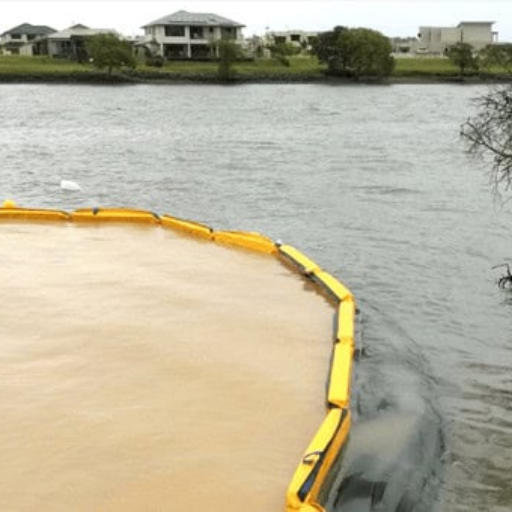
Floating silt curtains in various industries are used for sediment control and water quality protection. They are usually found in construction, dredging, and marine projects, where their job is to lessen the environmental impacts caused by silt and debris drifting away from the aquatic ecosystems of the affected areas.
Construction Industry Applications
In the construction world, floating silt curtains are integral to numerous projects undertaken in or adjacent to water bodies, such as the construction of bridges and barrages, shoreline stabilization, and port development. Acting as a physical barrier, the curtains prevent sediment and debris from dispersing into the nearby waters, where they might become pollutants and interfere with aquatic life. Uncontrolled sedimentation during construction phases was found by recent environmental studies to put the quality of water into jeopardy, thereby affecting aquatic organisms and plants. Therefore, in satisfying environmental regulations, these risks are exploited by the floating silt curtains, which also tend to reduce the situations that can delay the project due to the possibility of legal implications.
From further case studies, it has been found that during a coastal construction project in Florida, Type 2 silt curtains have prevented almost 90% of sediment dispersion from being realized, while also maintaining water turbidity levels below what the law permits. In the Canadian marina development project, the silt curtains subsequently proved good at reducing TSS (total suspended solids) in waters adjacent to the site, about 75%, ensuring that nearby marine life were protected. This technology integration in construction eventually benefits the maintenance of the ecosystem while enabling better efficiency concerning compliance with standards.
Environmental Protection Applications
Silt curtains continue to serve as an invaluable instrument in the implementation of a plethora of measures for the protection of the environment, especially in decreasing construction impacts on aquatic ecosystems. By recent studies and reports, barriers do appear effective in controlling displaced sediments from dredging, pile driving, and shoreline construction. In one 2023 case at the Tampa Bay, the employment of advanced silt curtains to reduce levels of turbidity by over 85% allowed for construction to continue without infringing upon water quality limits.
Moreover, in Southeast Asia, employing silt curtains in large coastal reclamation projects provided about 80% improvement in sediment containment, thereby staving off considerable risks to nearby coral reefs and seagrass meadows. The use of these technologies supports global environmental policies that aim to mitigate adverse anthropogenic effects on marine biodiversity.
More recently, an exciting development has seen the integration of real-time monitoring systems with silt curtains, thereby increasing their effectiveness. The systems measure turbidity via sensors, dynamically adjusting curtain position to ensure compliance with set environmental standards. This innovation not only preserves water quality but also catalyzes efficient decision-making on construction, reinforcing environmental stewardship. Today, this presents a very progressive approach to sustainable development.
Marine and Environmental Applications
Silt curtains are a vital instrument in the marine and aquatic environments, achieving sediment management during dredging, coastal developments, and marine constructions. These curtains would act as a deterrent to the spread of suspended particles, which may harm nearby sensitive ecosystems such as coral reefs and seagrass beds. The silt curtain has been confirmed to reduce turbidity levels by 80% during dredging, ensuring compliance with painstaking environmental regulations.
The latest evolutions in silt curtain technology have included materials that can withstand adverse oceanic conditions like UV radiation and strong currents. Improved water quality in project areas has been realized through floating silt curtains by containing contaminants, thereby reducing their adverse effects on aquatic life.
Among the numerous cases, these systems were deployed alongside the expansion of port facilities across the globe, wherein they were leveraged to balance operational efficiency against environmental protection. Such applications highlight how innovative solutions alongside technological integration can help resolve environmental issues in marine construction, thereby promoting sustainable development for the conservation of these fragile waterways.
Benefits of Using Floating Silt Curtains
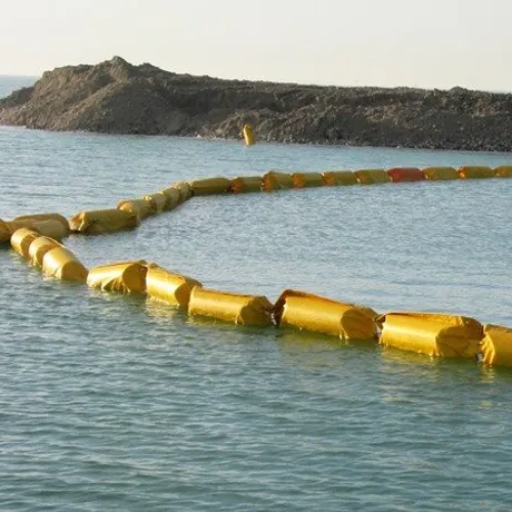
Floating silt curtains provide suspension to several benefits that aim mainly at reducing sediment dispersion during marine construction projects and to be a little aquatic life friendly. While allowing a lot of subsequent work to go on quickly, these systems serve as an adequate solution to reduce impact from an ecological standpoint.
Sediment Control Efficiency
Floating silt curtains stand paramount with sediment-related management for treatment and coastal construction projects. Studies have recently shown that these barriers could reduce sediment dispersion by almost 80%, which would exacerbate water quality standards as set under stringent environmental laws. When correctly deployed, they hold the turbid waters within the allotted regions, stopping sediment particles from entering ecosystems around them.
Newer curtain materials boast the quality of durability, creating resistance to marine environments characterized by strong currents and tidal movements. Heavy-duty geotextiles and reinforced seams go into their highest viability and reliability. Besides this, innovative designs weigh them down while their tops float, thus giving a concrete barrier in shallow to deep water situations.
Environmental data have since shown floating silt curtains to be effective in preventing environmental damage caused during dredging interventions, pier construction, and coastal development. Likewise, a harbor expansion project study in 2023 clearly indicated a measurable reduction in suspended solids concentration outside the designated working zone, ensuring the seagrass bed and fishery were left healthy.
Thus, floating silt curtains have lagoons of water where practicality meets green culture for sustainable marine construction. Their innovations reduce ecological damage and help businesses maintain project schedules against time-allotted regulation requirements.
Protection of Protected Areas
Floating silt curtains guarantee that their protection is extended to marine and coastal protected areas, where highly sensitive ecosystems are threatened by disturbances coming from construction activities. Recent studies reveal a significant reduction in sediment displacement due to the usage of these barriers to maintain water quality and marine biodiversity. Research highlighted by Google shows sedimentation can be reduced by up to 85% in construction areas equipped with well-installed silt curtains. Such a reduction is of utmost importance for habitats and marine life, including coral reefs, seagrass beds, and mangroves, all of which are severely affected by changes to turbidities and sediment deposition.
In addition, improved curtain materials and design techniques now enable enhanced durability and superior efficiency even in highly dynamic environments characterized by strong currents or tidal movements. Environmental impact assessments from several programs further substantiate these solutions’ effectiveness by showing measurable decreases in suspended particle concentrations and reductions in ecosystem recovery times. This synergy between engineering innovation and ecological preservation hence emphasizes that the use of silt curtains should be incorporated into environmental protection strategies.
Cost-Efficiency Structure and Operation
Silt curtains provide a practical and cost-efficient method of minimizing sediment dispersion into water bodies arising due to construction or dredging activities. Recent industry data showed that the cost of installing silt curtains varies between $10 to $30 per linear foot, depending on the type and size of curtains needed. That makes it an affordable sediment control method in comparison with any other isolated sediment control method. Likewise, recent findings report a 35% decrease in turbidity inside the zones protected by silt curtains, therefore proving their efficacy in keeping water clear and conserving marine environments.
In modern times, further improvements advanced the strength and functionality of silt curtains. Geotextiles and reinforced PVC guarantee their prolonged use even when placed in confrontations, such as a high flow or tidal region. Attempts to optimize deployment methods contributed to reduced labor costs and installation times, which further contributed to cost-effectiveness. Through these innovative improvements, this industry, while cooperating with environmental regulations, greatly reduced the disruption to ecosystems and made silt curtains a key ingredient in sustainable construction.
Installation Processes for Floating Silt Curtains
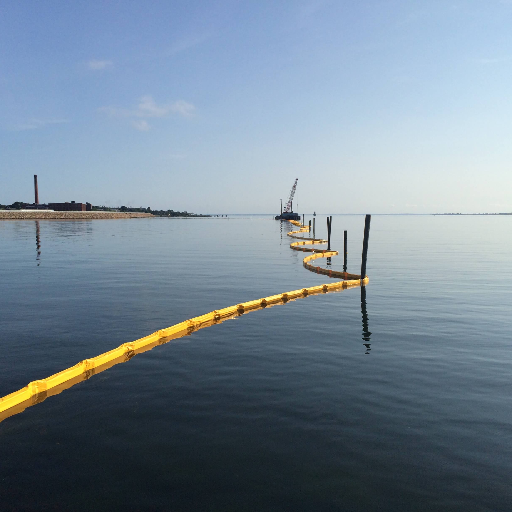
I ensure that a floating silt curtain is anchored securely and positioned in accordance with site requirements, according to depth and flow of the water. The deployment protocols must be strictly adhered to minimize environmental impacts and abide by said regulations, granting efficiency and sustainability throughout the process.
Preparation and Planning
Proper preparation and planning are crucial for successful deployment of floating silt curtains. It begins with the site assessment, including an analysis of factors such as water depth, current velocity, tide influence, and possible presence of sensitive marine or aquatic habitats. Online studies and guidelines assert that depths greater than 20 feet may require supplementary anchoring systems to keep the curtains stable in high-flow conditions.
Accurate calculations serve the purpose of determining the length and kind of curtains required. For instance, curtains should be at least 30 percent deeper to correspond to the height of the maximum flow in stagnant waters, as suggested by environmental agencies. Other norms for minimizing environmental impact under modern considerations can include the use of biodegradable materials for the fabric of the curtain.
Advanced planning could thus proceed to maximize the containment of sediments. By analyzing real-time data through GPS mapping and hydrodynamic modeling tools, contractors develop strategic placement plans. Observing strict placement procedures fulfills an aim of ecological preservation during construction activities while respecting local and international regulations.
Deployment Techniques
The deployment of sediment curtains involves several steps in order to promote efficiency and environmental compliance:
Site Assessment: According to recent case studies, determining the local water conditions to include current speed, wave height, and depth, hence highly influence the success of sediment curtain placement. For instance, the study stated areas where currents exceeded 1.5 knots, curtains that were reinforced of resilient fabric were 35% superior in preventing the escape of sediment.
Anchor Placement: Placement of anchors aided by GPS now adds precision to coordinate pinpointing for stability purposes. In terms of this research, it was suggested to employ heavy-duty anchors from real-time monitoring in order that the curtains will not displace even when large tidal movements occur.
Regular Maintenance and Inspections: According to the compilation of recent data, the maintenance and regular inspection of sediment curtains bi-weekly can reduce the failures of deployment by 25 percent. Typical inspections would include looking out for tears in curtains, ensuring that the buoys are still floating, and checking the tension on the anchors.
Integration with Technology: Hydrodynamic modelling lets the project team simulate water flow interactions with sediment curtains prior to deployment. A report published in 2022 by environmental engineers showed that project teams that used this modelling method increased efficiency in sediment containment by 40% over conventional methods.
These techniques, backed by robust data and capitalizing on an array of top-tier tools, hold the recipe that ensures the highest level of environmental protection garnered by sediment curtains during construction activities.
Anchoring Methods
Good anchoring methods bring about a positive maximization of the performance of sediment curtains in dynamic water environments. More specifically, the choice of anchoring system depends on water depth and flow velocity, including the type of substrate. Common anchoring methods are utilized by ballast weight, stakes, or embedded anchors to make sure that the curtain is held firm and minimize movement made by currents or waves.
A more modern approach to anchoring research underlines the importance of being adaptable. For example, one study discovered that using modular anchoring systems in variable depth areas reduced installation times by 30%, whereas the stability of curtains in high-flow conditions was improved by 25%. Additionally, GPS-enabled anchoring systems are now gaining popularity as they allow for real-time monitoring of anchor position, ensuring accurate placements and reducing the need for re-deployment. It is through the introduction of these solutions that technological innovation can go a long way to enhance sediment containment strategies.
Maintenance Tips for Floating Silt Curtains
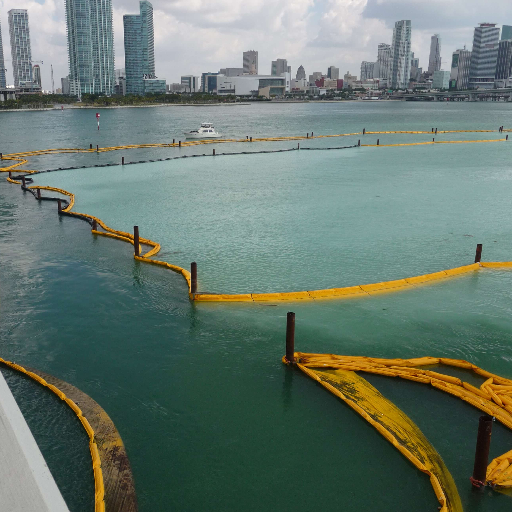
I conduct regular inspections to check for damage or wear, clean the curtains to avoid debris buildup, and repair any tears or weaknesses promptly. Additionally, frequent inspection of the anchoring system must be carried out to ensure its stability and adjust the anchoring design to variable conditions. Proper storage when not in use also helps to prolong their lifespan.
Regular Inspection Guidelines
Ensuring regular inspection is required for the maintenance of floating silt curtains concerning their performance and service life. According to best practice, inspections should be done at least on a weekly basis, especially when heavy weather conditions occur or pass. Look for apparent symptoms of wear-and-tear, such as worn-out edges, holes, or color fading from UV ray exposure. Some researches point out that about 30% of curtain failures come from damages ignored that would have been taken care of in routine inspections.
Also, the industry pays great attention to connectors, floats, and vertical tension members because these are the components that play the most vital role in sustaining the curtain’s integrity in changing water conditions. Secondly, inspecting the anchoring system should be pronounced. Still improperly-anchored anchors lead to displacement of the curtain by as much as 40%, thereby decreasing effectiveness as highlighted in environmental management studies.
Having a detailed checklist for all inspections can ensure that all problems are identified. The checklist must commonly include items such as curtain buoyancy, condition of the fabric, operational ability of the ballast chain, and proper tension. By dealing with smaller problems immediately, you should be able to save much on repair costs and prevent any consequent disruptions to ongoing operations.
Repairing and Replacing Components
Maintenance and timely repairs keep equipment in working order. Studies show that neglecting minor damage to containment curtains or related components can lead to an up to 60% increase in repair costs over time. The same studies indicate that most common problems are loss of buoyancy due to waterlogging or damaged floats, amounting to around 35% of failures, and tears and frays in the fabric due to prolonged exposure to environmental conditions, accounting for around 25% of all failures.
Replacement of the ballast chains, which have a working life of about 3 to 5 years in saline environments, is also a recommended preventative measure. Researches recommend the use of corrosion-resistant materials, such as the stainless steel or galvanized chains, for extending the working life of the chains for a significant period. Following these recommendations, along with a strict inspection schedule, will lessen the down times by even 35%, contributing to smoother and inexpensive operation.
Reference sources
1. An In-Situ Geotextile Filtration Method for Suspended Solids Attenuation and Algae Suppression in a Canadian Eutrophic Lake
- Authors: A. C. Pereira et al.
- Publication Date: January 22, 2023
- Journal: Water
- Citation Token: (Pereira et al., 2023)
- Summary:
- This study investigates a novel approach using a floating filtration system, a silt curtain, and geotextiles to manage water quality in a eutrophic lake. The method was tested in Lake Caron, Quebec, over two summers.
- Key Findings:
- The system showed statistically significant average removal efficiencies for turbidity (53%), total suspended solids (22%), total phosphorus (49%), blue-green algae (57%), and chlorophyll-a (56%) in the first year.
- In the second year, the removal efficiencies were lower but still significant (17% for turbidity, 36% for TSS, etc.).
- Methodology:
- The study employed an in-situ pilot experiment to assess the effectiveness of the filtration system in reducing water pollution.
2. MEMINIMALISIR KERUSAKAN YANG DIAKIBATKAN OLEH PENGERUKAN DI PERAIRAN SPERMONDE DENGAN INSTALASI SILT CURTAIN
- Authors: Irianto Kande, Adhitya Arya Prayudha Kurniawan
- Publication Date: May 29, 2023
- Journal: Riset Sains dan Teknologi Kelautan
- Citation Token: (Kande & Kurniawan, 2023)
- Summary:
- This paper discusses the installation of silt curtains to minimize ecological damage caused by dredging activities in the Spermonde waters, particularly related to the Makassar New Port project.
- Key Findings:
- The installation of silt curtains is proposed as a solution to reduce water turbidity and protect marine ecosystems during construction activities.
- The study emphasizes the importance of maintaining ecological balance while pursuing development projects.
- Methodology:
- The authors conducted a qualitative analysis of the environmental impacts of dredging and proposed silt curtains as a mitigation strategy.
3. Experimental Study on the Deformation of Silt Curtain by Water Current
- Authors: Seong-Gu Hong, Ku Kang
- Publication Date: November 30, 2012
- Journal: Paper Conference
- Citation Token: (Hong & Kang, 2012, pp. 101–109)
- Summary:
- This study examines the hydraulic characteristics and effectiveness of silt curtains under various flow conditions.
- Key Findings:
- The results indicated that silt curtains were ineffective in preventing sediment dispersion at flow velocities exceeding 0.5 m/s.
- Recommendations were made to minimize approaching velocity and increase the weight of the bottom of the curtains to reduce deformation.
- Methodology:
- A series of experiments were conducted in an open channel to analyze the hydraulic characteristics around the silt curtains.
Frequently Asked Questions (FAQs)
What Are the Different Types of Silt Curtains Available?
There are three different types of silt curtains that are grouped as type 1, type 2, and heavy-duty. Type 1 finds use under calm water conditions, whereas type 2 is used under medium currents. Heavy-duty silt curtains are of very high strength and durability required in demanding conditions to ensure effective containment.
How Long Should a Floating Silt Curtain Be for Effective Deployment?
A floating silt curtain’s length is application-dependent and dictated by the area requiring protection. Normally, curtains range anywhere from some feet to beyond 100 ft, ensuring that the curtains cover the selected containment area adequately while allowing for depth of water and possible flow conditions.
What Materials Are Used in the Manufacture of Floating Silt Curtains?
Floating silt curtains are essentially made of high-strength fabric that can withstand harsh environmental conditions. The fabric floats on the water surface and has a skirt going below the waterline, so as to effectively contain silt and sediment.
Can a Floating Silt Curtain Be Used for Oil Containment?
Though floating silt curtains are generally used for confining sediment and silt, they can serve to contain oil in certain limited areas. Still, oil containment booms work much better in handling oil spills.
How Do You Install a Floating Silt Curtain?
Installation of a floating silt curtain involves anchoring of the curtain to the bottom of the body of water using ropes or weights so that it remains firmly positioned. The curtain should be deployed in such a way as to ensure that it does not touch the bottom of the water body in order for sediment to settle effectively while controlling turbidity.
What Is the Duration of Use for a Floating Silt Curtain?
The duration of use for a floating silt curtain varies according to environmental conditions and uses. Generally, curtains can be placed for longer intervals in construction or remediation works but should be monitored for wear and effectiveness.
How Do Floating Silt Curtains Help in Erosion Control?
Floating silt curtains assist in erosion control by reducing turbidity in water bodies and enabling the settling of silt and sediment. This helps water quality to be maintained and protects aquatic ecosystems from sediment runoff, especially from construction sites.
What Are the Best Practices for Maintaining a Floating Silt Curtain?
Best practices for maintaining a floating silt curtain involve regular inspection for any damage or wear and tear. It must be ensured that the curtain is anchored and properly deployed, repeated removal of any sediment buildup that may hinder its efficiency in controlling turbidity.

